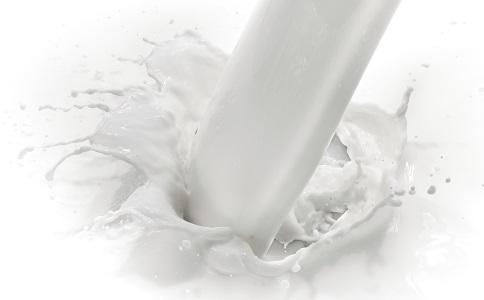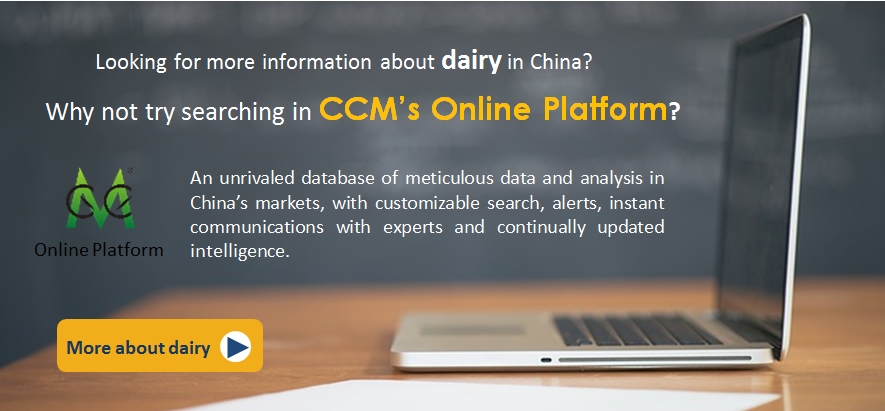On 4 September, the 5th Cross-Strait Fresh
Milk Development Forum was held in Fuzhou City, Fujian Province. During this
event, the "Circle of Friends" for the China Quality Milk Programme
was jointly established by 20+ dairy companies (including New Hope Dairy,
Changfu Dairy, Bright Dairy, Beijing Sanyuan, Huishan Dairy, Wondersun Dairy,
NanJing Weigang Dairy, Kunming Xuelan Dairy, Jinan Jiabao Dairy, Henan
Huahuaniu Group Dairy, Yantang Milk, Fengxing Milk, Jiangxi Sunshine, Guizhou
Haoyiduo Dairy, Xuzhou Lujian Dairy, Tianyou Dairy). This aimed to promote the
programme's implementation and speed the development of the fresh milk segment
("Circle of Friends" is an imitation of WeChat's function,
"Moment", which is also known as "Circle of Friends".)

Source: Baidu
For a long period take-up of the programme has been called for by the domestic dairy industry. However, some large dairy companies have held back from full
implementation. The programme mainly consists of:
-
Labelling products as “Quality Milk”
-
Dairy farming technology upgrade
-
Supervision of standardisation of
processing
The accreditation is mainly targeted at fresh milk, which should have
characteristics such as “near to raw milk sources”, “short-distance
refrigerated transportation” and “instant consumption”. Consumers are expected to
easily see whether the milks are "quality" through the labelling.
“The programme will help rebuild confidence in domestic milk products and ease
the imbalance of profit distribution in the industry,” commented a trade
source.
Ever since the melamine scandal, China’s dairy market has endured periods of
rapid price drops or increases. This year is "the hardest year for the
domestic dairy business,” stated Gao Hongbin, Director of the Dairy Association
of China (DAC): “In March, 51% of companies made a loss. In H2, this proportion
is still growing.”
There are two fundamental factors behind
the flat domestic dairy market:
-
Weak demand, causing slower growth in
consumption and oversupply.
According to the National Bureau of
Statistics, local sales of liquid milk (fresh + UHT, including imports) stood at 27.39 million tonnes in
2015, up by 3.6% - this compared with averages of 5.1% in 2011-2015 and 11.1%
in 2006-2010.
On 16 August, the DAC issued the China
Dairy Industry Quality Report (2016), produced with support from China’s
National Health and Family Planning Commission, General Administration of
Quality Supervision, Inspection and Quarantine and the China Food and Drug
Administration. In 2015, national milk production (incl. goat milk) reportedly hit
38.70 million tonnes, whilst consumption of dairy products was 29.58 million
tonnes. According to the 2015 China Rural Statistical Yearbook, the country's
dairy herd stood at 15.07 million head in the same year.
-
The threat posed by foreign dairy products:
China imported 1.79 million tonnes of dairy products in 2015, equal to about 11
million tonnes of milk (based on 1:8 ratio between powders and raw milk); in
January-June, imports of milk powder (incl. infant formula) hit 407,800 tonnes
(= 3.26 million tonnes of raw milk), up by 18.6% YoY; liquid milk imports were
up by 77.55% to 314,000 tonnes.
“Developing the fresh milk segment is a key
means of surviving the sluggish market, depending on stressing the original
milk's quality,” said Gao Hongbin, implying its greater nutritional properties
compared with long-life milk. Many local processors recombine imported powder
to produce UHT milk as the international price is nearly 1/2 the domestic one.
According to statistics from the International Farm Comparison Network (IFCN),
the theoretical world milk price was about RMB1.44/kg in May, compared with
RMB3.46/kg from China's 10 leading milk producing regions. However, going from
raw milk to powder and then to reconstituted milk means 2 high-temperature
sterilisations which cause huge nutritional losses (local processing
specialists cite 60% of active protein being lost in the initial spray-drying).

According to the Notice to Enhance Administration on Liquid Milk Production and
Sales (released by the General Office of the State Council
in September 2005,implemented
on October 15, 2005), if reconstituted milk is used for producing UHT milk,
manufacturers should note this on the label, and make clear the proportion
used. The Identification of Reconstituted Milk in Fresh Milk and UHT Milk
issued in April also stresses increased inspection of reconstituted milk.
However few local dairy products using reconstituted milk are declared as such
on-pack, an issue which clearly needs tackling. This represents an opportunity
for fresh milk. Practice of the quality milk programme is expected to push
dairy processors to purchase higher quality raw milk, and dairy farmers to
increase their efforts to produce such a product.
“The price of raw milk will increase materially in early 2017,” stated dairy
analyst Song Liang; “We expect fresh dairy products including fresh milk,
yoghurt and ice cream will grow also. It is necessary to encourage companies to
develop fresh milk to make a turnaround.”
Taiwan provides a good example of an industry countering use of imported milk
powder with fresh milk: “30 years ago, we started promoting labelling for
quality milk, and focused on developing fresh milk. Now 98%+ of local farm milk
is used for producing fresh milk,” stated Shi Zongxiong, Honorary Director of
the Dairy Association of Taiwan.
In mainland China, this percentage is very low. According to the China Dairy
Industry Quality Report (2016), fresh milk accounts for 10% of the liquid milk
market compared with 80%+ in the US and Australia.
“We are making a 5-year plan for the quality milk programme, a move intended to
increase the consumption of quality dairy products (meaning fresh milk) to 30%,
and to 90%+ within 10 years,” claimed Wang Jiaqi, DAC’s Vice Director.
This article comes from Dairy Products China News 1609, CCM

About CCM:
CCM is the leading market intelligence provider for China’s
agriculture, chemicals, food & ingredients and life science markets. Founded in 2001, CCM offers a
range of data and content solutions, from price and trade data to industry
newsletters and customized market research reports. Our clients include Monsanto,
DuPont, Shell, Bayer, and Syngenta. CCM is a brand of Kcomber Inc.
For more
information about CCM, please visit www.cnchemicals.com or get in touch with us
directly by emailing econtact@cnchemicals.com or calling
+86-20-37616606.
Tag: dairy